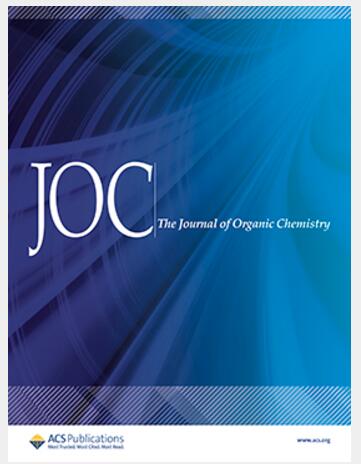离子对条件下多离子配合物和大块BArF-阴离子对氯离子结合的竞争。
IF 3.6
2区 化学
Q1 CHEMISTRY, ORGANIC
引用次数: 0
摘要
阳离子电荷长期以来被用来增强阴离子结合。嵌入电荷为目标阴离子引入了强离子配对,但也为非目标离子引入了强离子配对,最终产生了难以识别和量化的多离子混合物。虽然许多人使用极性溶剂和弱配位离子来回避这个问题,但这些方法排除了在识别、组装、分离、模板和催化等应用中发现的大量横截面条件。为了应对这种复杂性,我们研究了阴离子与具有低形状互补性的阳离子受体在低极性溶剂中的结合,以最大限度地发挥离子相互作用。我们将受体作为弱配位四[3,5-二(三氟甲基)苯基]硼酸盐(BArF-)阴离子的盐制备,并研究了小氯离子(Cl-)和中等碘离子(I-)的结合。令人惊讶的是,使用大体积的BArF-阴离子不会抑制离子配对相互作用,65%的受体在0.5 mM的二氯甲烷中配对。我们观察到多离子受体- cl -络合物(2:1,1:1,1:2),加强了在低极性介质中工作时出现的复杂性。我们揭示了亲和性对阴离子电荷密度和大小的依赖性,以及体积较大的BArF-反阴离子竞争氯离子结合。这些研究揭示了BArF-阴离子的非清白性和量化多离子种类的策略。本文章由计算机程序翻译,如有差异,请以英文原文为准。
Multi-Ion Complexes and Competition from Bulky BArF- Anions for Chloride Binding in Ion Pairing Conditions.
Cationic charges have long been used to enhance anion binding. Embedding charge introduces strong ion pairing for target anions but also for off-target ions, ultimately generating a mixture of multi-ion species that are hard to identify and quantify. While many sidestep this problem using polar solvents and weakly coordinating ions, these approaches exclude a substantial cross-section of conditions found in applications spanning recognition, assembly, separations, templation, and catalysis. To confront this complexity, we study the binding of an anion to a cationic receptor featuring low shape complementarity in a low-polarity solvent to maximize ionic interactions. We prepared the receptor as a salt of the weakly coordinating tetrakis[3,5-bis(trifluoromethyl)phenyl]borate (BArF-) anion and studied the binding of small chloride (Cl-) and medium-sized iodide (I-) anions. Surprisingly, the use of the bulky BArF- anion does not suppress ion pairing interactions, with 65% of the receptor being paired at 0.5 mM in dichloromethane. We observe multi-ion receptor-Cl- complexes (2:1, 1:1, 1:2), reinforcing the complexity that emerges when working in low-polarity media. We reveal the dependence of affinity on anion charge density and size and that bulky BArF- counteranions compete for chloride binding. These studies reveal the noninnocence of BArF- anions and strategies to quantify multi-ion species.
求助全文
通过发布文献求助,成功后即可免费获取论文全文。
去求助
来源期刊

Journal of Organic Chemistry
化学-有机化学
CiteScore
6.20
自引率
11.10%
发文量
1467
审稿时长
2 months
期刊介绍:
Journal of Organic Chemistry welcomes original contributions of fundamental research in all branches of the theory and practice of organic chemistry. In selecting manuscripts for publication, the editors place emphasis on the quality and novelty of the work, as well as the breadth of interest to the organic chemistry community.
 求助内容:
求助内容: 应助结果提醒方式:
应助结果提醒方式:


